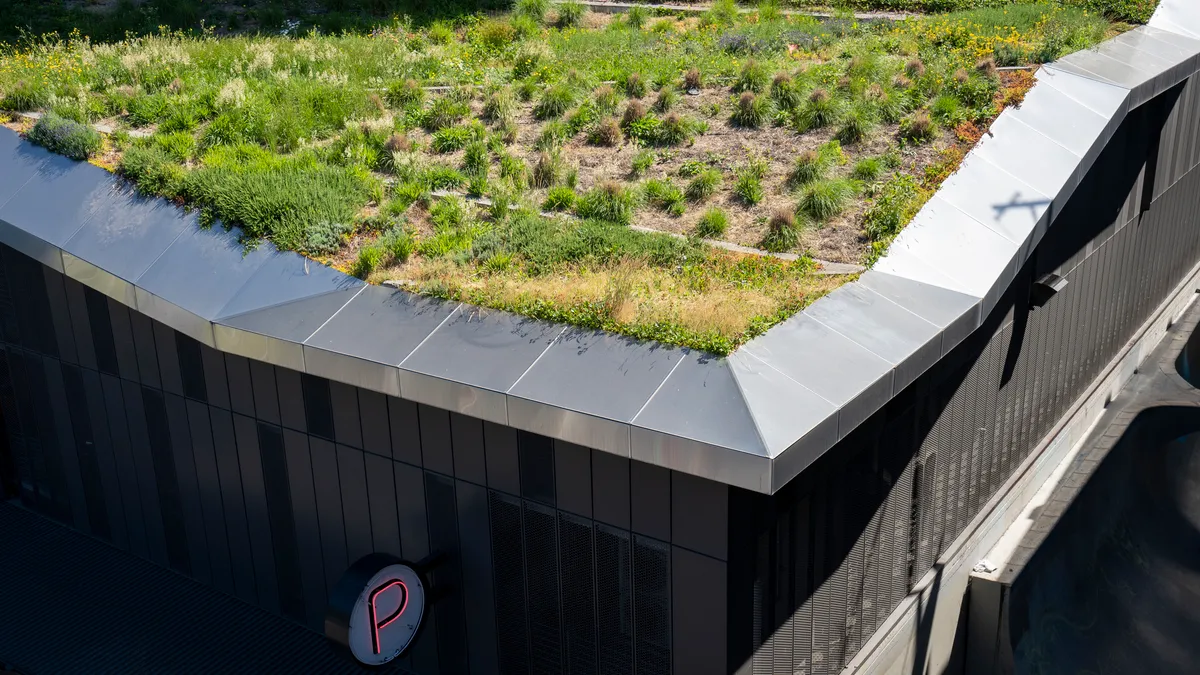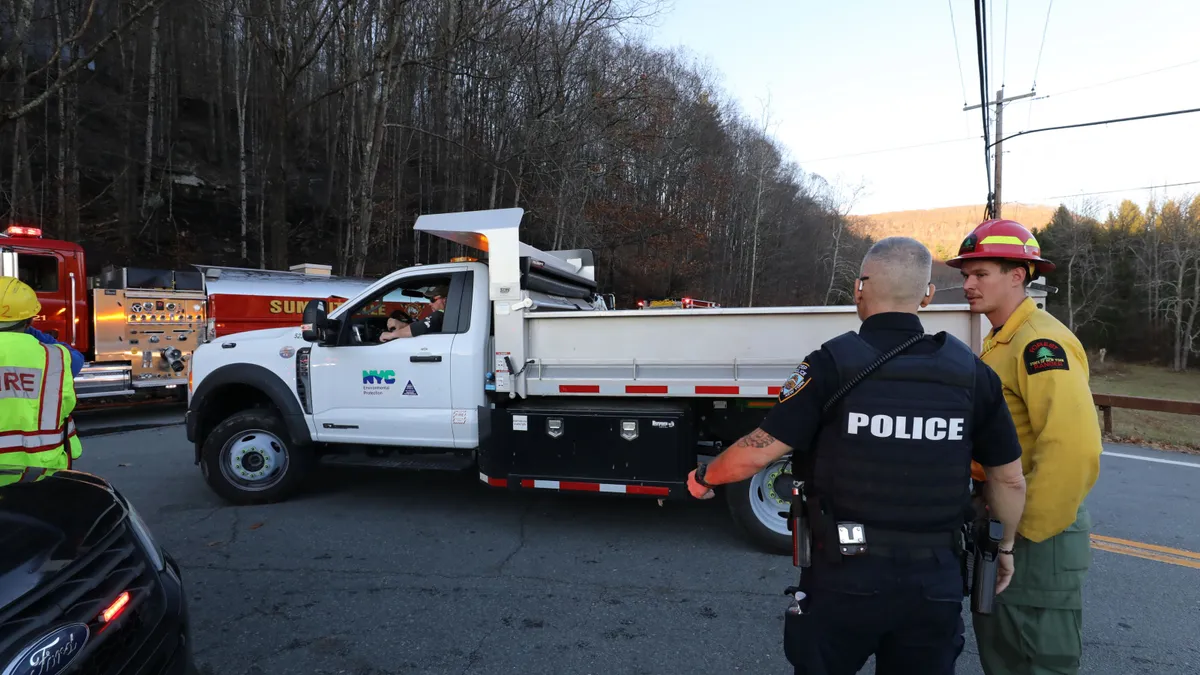Baltimore’s approach to waste management is shaped by its complicated history and complex geography. As the city began to develop in its early history, it was a port town with tightly-packed rowhomes and narrow streets on the waterfront. As it has grown out into the suburbs, single-family homes have popped up and roads have widened.
A varied geography isn’t Baltimore’s only challenge when it comes to waste management. Like other cities, Baltimore is divided into very poor neighborhoods and more affluent neighborhoods — largely as a leftover relic of redlining in the 1960s. Baltimore’s disparate economy has created a patchwork of neighborhoods of people who can afford to think about buying reusable products and recycling, and those who can’t. The city has to funnel funds toward issues like a rising crime rate and blighted city blocks, leaving little money, or thought, for waste and recycling.
Baltimore has, as a result, faced plenty of challenges when it comes to dealing with solid waste. While the lovable Mr. Trash Wheel has been a high-profile success story, other efforts in Baltimore have gone without much recognition. And, while some programs have resulted in measurable success, Charm City still has its fair share obstacles to overcome.
Municipal trash cans
For decades, Baltimore had a massive problem with its rat population — and with dirty alleyways and streets. While the city has provided residential pickup of trash for decades, it wasn’t until 2016 that the city provided all residences with municipal trash cans. This was two years after the city installed lifters on its collection trucks, according to Tonya Simmons, a division head at the Baltimore Department of Public Works (DPW) Bureau of Solid Waste.
Before rolling out municipal cans in the entire city, DPW conducted pilots in two neighborhoods — one with narrow streets and alleys and one that was more mixed and included single-family homes. This way, the city could test how well the collection trucks work in different areas of the city with different geographic requirements. Before the pilot, residents were on their own for finding a trash can to stick out on the street or in alleys. And, according to Simmons, people in Baltimore had "a tendency to have plastic bags [full of trash] or throw it out there as it is. That doesn’t help us with the rat population or make a cleaner street or alley."
The pilot was a success. It helped Baltimore clean up streets and kept waste out of alleys, but there was a perhaps unexpected side effect. As municipal trash cans were distributed, and residents had a clear container to store their waste, calls and complaints of dirty alleys and streets actually increased.
Simmons said it wasn't because there was suddenly more trash being blown around the neighborhoods or because trash wasn't secure in the bins. It was because residents were now educated about what city expectations were and about how they could report dirty streets.
"It created energy and synergy with the residents in those neighborhoods," Simmons said during a panel at WASTECON. "They didn't want anything in their alleys, so calls started going up."
By June 2016, DPW had delivered most of the approximately 170,000 municipal trash cans, which belong to the city and are equipped with RFID chips. The city bears the cost of replacements in a few situations – like if a cart is stolen or if a collection crew damages a cart. Otherwise, residents are on the hook for paying for repairs.
Solid waste management in Baltimore lays claim to only a small part of DPW’s overall budget. Therefore a program that’s able to remove trash from streets and alleys and make it easier for residents to contribute to keeping refuse in the waste stream – with a relatively low price tag that came out Baltimore’s spending plan – can serve as a solid example for other cities looking to improve their residential collections.
Rats!
Baltimore's 650,000 residents are highly outnumbered by the approximate population of 8 million rats, according to Yvonne Moore-Jackson, a division chief for DPW’s Bureau of Solid Waste. The problem with rats isn’t new in the city, and officials are working to reduce the number of rats after a shift in policy in 2014. Before then, DPW workers would only deal with rats in response to resident complaints. To deal with the increasing number of complaints, though, DPW decided to switch from a reactive to a proactive approach.
DPW now sends teams out into neighborhoods, aiming for 30-day cycles. Those teams go into alleys and, when given permission, into housing units to look for signs of rat infestations, treating as necessary.
"They know we’re coming," Jackson-Moore said. "[Residents] are not seeing as many rats and they know when we’re going to come."
Since the start of the proactive program, the number of resident complaints has seen a steady decrease. In 2015, Baltimore officials recorded 8,503 citizen complaints related to rats. In 2016, when the municipal trash cans were rolled out, there were 7,306 complaints. As of the end of September, when the numbers were reported at WASTECON, there were only 4,034 complaints.
They’ve been increasing the number of inspections, too. In 2014, the city reported 66,613. In 2015, it climbed to 99,309 and 105,931 in 2016. As of the end of September 2017, there had been 108,556. In addition to reducing the number of citizen complaints, the increased number of inspections has also lead to a reduction in the number of reported rat burrows. In 2015, the city reported 51,284 rat burrows. In 2016, that number dropped to 41,896.
"However, we still have a challenge with improper trash disposal,” Jackson-Moore said. "Although most communities are using the new municipal trash cans, we still have some challenges in neighborhoods."
Some people, for example, are placing household waste in public trash cans and there are problems with illegal dumping. To work on addressing those challenges, DPW is working on gaining increased enforcement for the department – currently, citations have to go through the Department of Housing as Public Works can’t, on its own, issue enforceable citations.
Despite challenges from illegal dumping and lack of enforcement, Baltimore DPW has made progress in keeping littler off the street and in getting more customers engaged with municipal waste management. However, there is one area where the city is still considerably struggling.
Recycling
The City of Baltimore has a diversion rate of just around 21%, according to Bob Murrow, the city’s recycling coordinator. And, according to his data, about 17% of what’s recycled in the city is glass. The city accepts glass, he said, but essentially has to pay Waste Management to accept it at a nearby MRF.
"The value of recyclables is lower than the processing fees," Murrow said.
More of a sticking point than the low value of the recyclables is the low diversion rate. Some neighborhoods in the city have a much better diversion rate than others. The suburban neighborhood of Mt. Washington has the highest diversion rate, according to Murrow; Sandtown-Winchester, an economically challenged neighborhood in the western part of the city, has the lowest.
For Murrow, the solution to Baltimore’s diversion rate has a lot to do with how things are budgeted.
"It's about money. A lot time you’ll hear this talk at these conferences about messaging. I'm like, 'We don't need messaging,'" Murrow said. "I got messaging. I got messaging out the ying-yang. I need delivery of the message."
Murrow said he didn't think there was any way he’d get a marketing budget of even $1 for each household in the city. Even if the number of households was just a fraction of the total number of residents, Murrow said, he’d still need hundreds of thousands of dollars to reach every household.
"I ain’t getting that for a marketing budget,” Murrow said.
During his presentation, Murrow said Baltimore faced several challenges to increasing its diversion rate, in addition to the struggle with the department budget. The department doesn't offer municipal recycling bins, so residents would have to pay for their own containers — something that not everyone can afford to do in an economically-pressed city. Additionally, he said, people living in poverty tend to buy cheap, single-use items, instead of more durable, reusable products.
That brings with it conflicting priorities and a sense of disconnection, Murrow said. If you’re struggling to put food on the table, you’re not going to be concerned about sorting recyclables. Additionally, if recycling isn’t part of the culture of the community — just like it isn’t in many Baltimore neighborhoods — people will feel less inclined to recycle.
Charm City
But, Murrow added, there are some people who act as "a light in the storm."
"I’m getting recycling from every area of the city," Murrow said. Children could lead the way in making recycling more of a citywide priority if, for example, it’s pushed in schools.
Extra education programs, like through partnering with the public schools in the city, may be one of the best ways forward for Baltimore to improve its diversion rate. While budgeting for DPW and recycling education and messaging may be a challenge, it could be the only way forward to get more residents to recycle. Other cities and companies have discussed the possibility of increased diversion rates by switching to a franchise system — but Murrow said that may not be possible in Baltimore. Currently, Baltimore provides residential pickup and leaves commercial collections alone. Businesses contract with whichever waste hauler they choose.
"One of the difficulties in the franchise system is, we provide so many different services, [like] street sweeping [and] bulk trash pickup," Murrow said. "How do you break all those down?"
Baltimore has seen a few successes in dealing with solid waste. In addition to the crackdown on rats and distribution of municipal cans, for example, Baltimore's trash wheel was so successful that local nonprofits have already installed a second wheel, with plans for a third.
Demonstrated successes should be a reason for optimism in Charm City. Previous attempts to manage solid waste in the city have proved successful, so attempts to reach more residents and improve the diversion rate could be successful as well, if city officials are given the right tools. Murrow said he believed that the city and DPW have the right messaging for increasing recycling — they just need a way to get that educational message out.
"Somehow I need to reach out to all these people," Murrow said.



















